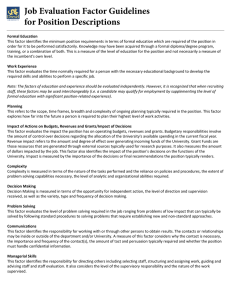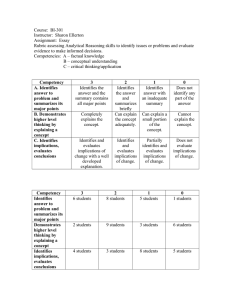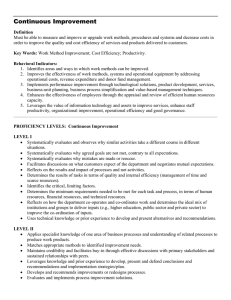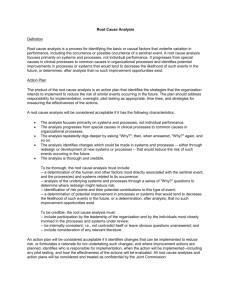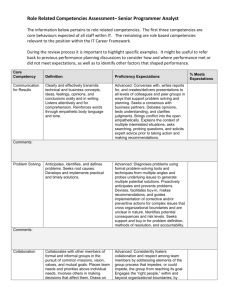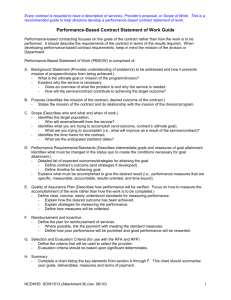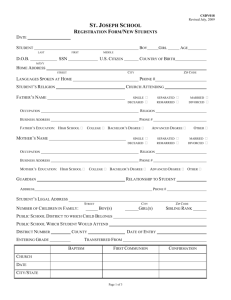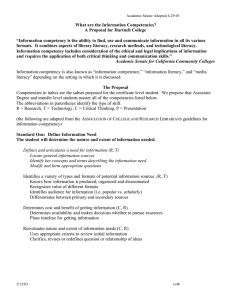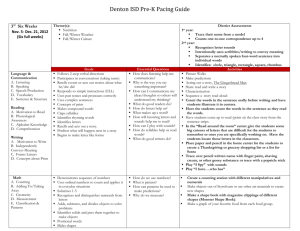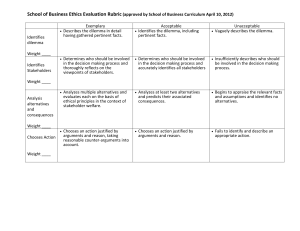sample course outline
advertisement
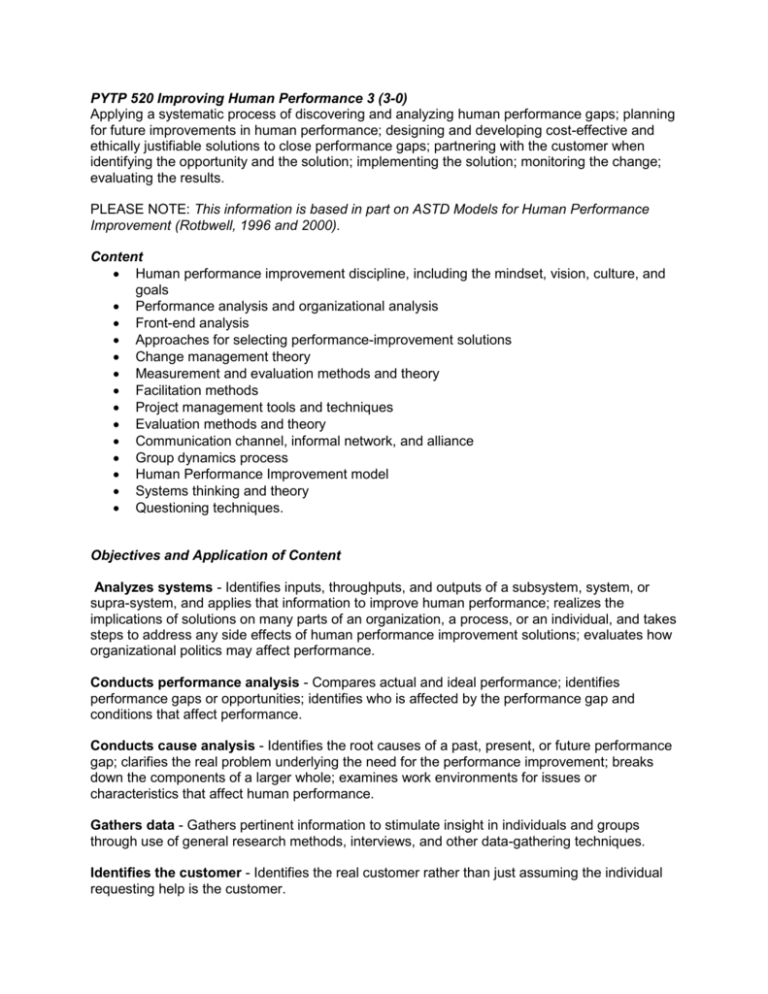
PYTP 520 Improving Human Performance 3 (3-0) Applying a systematic process of discovering and analyzing human performance gaps; planning for future improvements in human performance; designing and developing cost-effective and ethically justifiable solutions to close performance gaps; partnering with the customer when identifying the opportunity and the solution; implementing the solution; monitoring the change; evaluating the results. PLEASE NOTE: This information is based in part on ASTD Models for Human Performance Improvement (Rotbwell, 1996 and 2000). Content Human performance improvement discipline, including the mindset, vision, culture, and goals Performance analysis and organizational analysis Front-end analysis Approaches for selecting performance-improvement solutions Change management theory Measurement and evaluation methods and theory Facilitation methods Project management tools and techniques Evaluation methods and theory Communication channel, informal network, and alliance Group dynamics process Human Performance Improvement model Systems thinking and theory Questioning techniques. Objectives and Application of Content Analyzes systems - Identifies inputs, throughputs, and outputs of a subsystem, system, or supra-system, and applies that information to improve human performance; realizes the implications of solutions on many parts of an organization, a process, or an individual, and takes steps to address any side effects of human performance improvement solutions; evaluates how organizational politics may affect performance. Conducts performance analysis - Compares actual and ideal performance; identifies performance gaps or opportunities; identifies who is affected by the performance gap and conditions that affect performance. Conducts cause analysis - Identifies the root causes of a past, present, or future performance gap; clarifies the real problem underlying the need for the performance improvement; breaks down the components of a larger whole; examines work environments for issues or characteristics that affect human performance. Gathers data - Gathers pertinent information to stimulate insight in individuals and groups through use of general research methods, interviews, and other data-gathering techniques. Identifies the customer - Identifies the real customer rather than just assuming the individual requesting help is the customer. Incorporates customer/stakeholder needs - Partners with the customer/stakeholder to clarify needs, business goals, and objectives; agrees on desired results and gains agreement on how those results can be achieved efficiently and effectively. Selects solutions - Selects appropriate human performance improvement solutions that address the root cause(s) of performance gaps rather than symptoms or side effects. Manages and implements projects - Identifies sponsors or champions to help ensure successful project implementation; sources work, budgets, plans and organizes, manages, and executes complex performance improvement projects. Builds and sustains relationships - Builds credibility and trust with the client based on knowledge and understanding of the business; partners and collaborates with the client on an ongoing basis to maintain a sustained business relationship. Evaluates results against organizational goals - Assesses how well the results of a human performance improvement solution match intentions; ensures that goals are converted effectively into actions to close existing or pending performance gaps; obtains results despite conflicting priorities, lack of resources, or ambiguity; links human performance improvement to organizational goals. Monitors change - Monitors the human performance improvement solutions as they are being implemented; assess how changing conditions inside and outside the organization affect or impact the solution. Uses feedback skills - Collects information about performance and feeds it back clearly, specifically, and on a timely basis to affected individuals or groups. Sample Outputs Analysis data and recommendations Data collection tools Action plans Solution designs Evaluation reports List of root causes Performance metrics Risk-management reports Systems flowcharts Project reports Project plans Evaluation plans.
